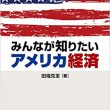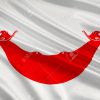米国商務省記述の米国観光事情
公開日:
:
最終更新日:2016/11/25
人口、地域、
明日から米国である。商務省の観光事情分析を読んでみた。
http://travel.trade.gov/outreachpages/download_data_table/2015_Outbound_Analysis.pdf
アメリカの観光統計は、まず、メキシコ、カナダは別扱いにしている。陸続きであり、国内観光地の延長なのであろう。アリゾナ州の住民はメキシコを東部よりも身近に感じている。デズニーランドのデイビークロケットの歌は英雄扱いだが、ヒスパニックが増加してくると、逆賊扱いになるかもしれない。豊臣秀吉や安重根も評価が場所と時代により変わるようなものである。
アメリカの人流ではメキシコ、カナダ以外の地域をoverseas countries と分類して、その地域から者を別の外国人旅行者としている。似たような発想に基づく統計は、シンガポール、マレーシア間でも行っている。両国は同じ国であった時代もあった。香港・マカオ(SAR)、台湾と中国本土の人流統計関係は政治的な理由もあるが、統計を別にする。台湾では華僑旅客と外籍旅客に分類するから、同胞意識が日本人よりも強いのかもしれない。VFRとしての旅行原因にはなる。外国人旅行者として増加させたい日本で、こういう発想ができる時代はいつ来るのであろうか。可能性が高いのは、九州と韓国、沖縄南西諸島と台湾の間で日帰り客のウェイトが高まった場合であろう。
The U.S. resident outbound market totaled 74.0 million in 2015, up nine percent from 2014. Travel to overseas countries (32.8. million) increased seven percent, to Canada (12.5 million) up eight percent and travel to Mexico (28.7 million), singly the largest outbound market, was up 11 percent. The top five destination countries visited by U.S. residents in 2015 were: Mexico (28.7 million) and Canada (12.5 million), followed by the overseas countries of the United Kingdom (2.9 million), Dominican Republic (2.8 million) and France (2.4 million). Nine of the top 10 destinations visited by U.S. travelers posted increases in 2015.
メキシコ、カナダ間の人流量は一千万人単位である。中国本土と香港、マカオ間の流動並であり、日本の外客が二千万人を超えたといっている話が小さく感じる。第三位、第五位に英国、仏国が入っている。やはり移民の影響なのであろう。人口一千万人のドミニカ共和国が第四位280万人というのも、国内流動並である。
商務省は、国が広いから、出国地域ごとに解説をしている。
The top origin regions/states from which U.S. residents traveled to overseas destinations:
• Middle Atlantic States (New York, New Jersey and Pennsylvania), with a 20 percent share of all U.S. regions, was down eight percent from 2014.
• South Atlantic States (primarily Florida, Georgia, Virginia, Washington, D.C., Maryland and North Carolina) accounted for 23 percent and travel was up 25 percent.
• Pacific States (California and Washington) generated 15 percent of outbound travel was down four percent from 2014.
• West South Central States (mainly Texas) registered a 12 percent share and travel was up 18 percent.
• Travel from East North Central (primarily Illinois, Ohio and Michigan) accounted for 10 percent and was up seven percent.
いずれ中国の旅行事情は中国と記述するのではなく、大きく地域で分割して解説するようになるのであろう。誘客も中国人といってもいっぱひとからげに言っていてはビジネスにならなくなるのであろう。
Main trip purpose. Vacation/holiday estimated at 53 percent of U.S. overseas travelers was up 11 percent in volume from 2014. Visiting friends and relatives (VFR) was the second-highest main trip purpose, at 27 percent, and was up six percent in volume from 2014. Business travel, as the main purpose of trip, composed 10 percent of outbound travel; but volume was down five percent from 2014. Convention travel was three percent of travel and the number of convention travelers decreased nine percent in 2015.
人流のモチベーションにVFR(visit friends and relatives)が第二位に挙げられている。移民の国だからであろう。
日本の出国率、入国率が低いのも移民が少ないからであろう。せいぜいハワイ、ブラジルである。それにしても日本人のハワイ行きは特殊である。350万人の訪米日本人のうち150万人がハワイ、80万人がグアムである。残り120万人が大陸に行くのであるから、実質は少ないといえる。
• The top ten ports of departure for U.S. citizens were New York (JFK), Miami (MIA), Atlanta (ATL), Los Angeles (LAX), Newark (EWR), Chicago (ORD), San Francisco (SFO), Washington (IAD), Houston (IAH) and Boston (BOS) which accounted for 76 percent of U.S. departures.
上位10都市で76%は驚き
以下アメリカ人の旅行事情を詳しく教えてくれている。
ネットよりもエアライン情報を活用しているのは、日本でいえばJR情報を活用しているような感じなのであろう。なにせ、米国国内航空の規模は日本のJRの2倍の大きさであるから。
旅行計画もずいぶん丹念に立てている。
一人旅も割合が高いことに驚いた。
旅行期間はさすが長い。
カード使用率が5割とは予想より低いのである。
あちこち回らないのは国が広いからであろう。
旅行の決めてはやはり航空運賃のようである。
• Advance trip decision time and airline reservation time increased to an average of 102 days and 70 days prior to departure, respectively, in 2015 compared to 2014.
• As an information source for trip planning, airlines were most used (52 percent), along with online travel agencies (OTA) (32 percent) and conventional travel agencies (17 percent). More than a third of travelers booked directly through the airlines (39 percent), a majority booked indirectly via either an Internet booking service (31 percent) and/or a travel agency (18 percent).
• Pre-paid package usage decreased slightly to 13 percent of U.S. travelers.
• The average length of stay (number of nights) outside the United States was 17.2 nights in 2015, down ½ day from 2014.
• Seven percent of travelers were on their first international trip, down from 2014, meaning the number of repeat travelers increased more. The average number of international trips taken by U.S. travelers in the last 12 months was 2.6, about the same as in 2014.
• The number of destinations visited averaged 1.8 in 2015. The percentage visiting only one destination was again 57 percent. Those visiting three or more destinations were also 20 percent as in 2014.
• Travel party size held at 1.6.
• The modes of inter-city transportation used by U.S. travelers between destinations overseas were airline (65 percent, down from 66 percent in 2014), bus (20 percent), and railroad (14 percent). The top modes of intra-city transit were taxicab/limo (30 percent) and subway/tram/bus (20 percent). The use of private and/or rented autos was 39 percent and 12 percent, respectively. Five percent traveled on cruise/river boat for overnight trips. Seven percent took short scenic cruises or used a ferry/river taxi.
• Top leisure activities for U.S. travelers were sightseeing, shopping, visiting small town/countryside, experiencing ‘fine dining’ (gastronomy), visiting historical locations, taking guided tours, visiting art galleries/museums, experiencing cultural/ethnic heritage sites, visiting national parks/monuments and ‘nightclubbing’.
• Average international airfare per visitor, per trip, was $1,237 USD, down eight percent from 2014, and average expenditures (travel payments) per visitor, per trip, while overseas were $1,487, flat from 2014. The usage of credit cards increased slightly to 56 percent. Cash brought from home and cash withdrawn from an ATM using credit/debit cards and purchases using debit cards accounted for 44 percent.
• Airfare and convenient schedules were main factors in airline choice. Over 81 percent ‘paid’ for the ticket without the use of awards, upgrades or deeply discounted fares. Seventy eight percent flew in coach or economy class.
• Travel insurance was purchased for the trip by 30 percent of respondents, up from 28 percent in 2014.
• Twelve percent visited a health care provider in advance of their trip, the same as in 2014.
Demographic Data:
• Fifteen percent of respondents identified themselves as Hispanic. Sixteen percent identified as Asian, eight percent as Black, and two percent as American Indian/Alaskan Native or Hawaiian Islander. Fifty-nine percent of U.S. citizens who visited Asia in 2014 identified themselves as Asian. Fifty-two percent of those visiting South America had identified as Hispanic.
日本人は外国人観光客には来てもらいたいという割には、外国人の移民には消極的である。
しあkし、移民が増えれば観光客も増える、移民が少ないからこれまで外国人が来なかったということを理解しておいた方がいいのであろう。
• Females composed slightly over half (50.3%) of U.S. travelers to overseas. The number of women travelers continues to increase. (In 2000 women were 39 percent of U.S. outbound.) The average age of male travelers was 45.0, slightly down from 2014; female travelers averaged 43.5 years, also slightly down from 2014.
Average household income was $125,000, up from 2014. First time traveler households reported $83,000 and repeat traveler households reported $129,000 annual income. Seven percent of traveler households earned $300,000 or more. Business and convention travelers earned an average $153,000.
年収1千百万円代クラスの40代が旅行の中心のようである。日本の地方の住民には高嶺の花かももしれない。
この20年間に日本は一人当たりのGDPを減少させている。その間に香港もシンガポールも韓国も台湾も先進国の仲間入りをし、日本を追い抜いてしまった。アメリカも経済成長は続けているのである。日本人が旅行をしなくなった最大の原因はやはり収入が減少したからであろう。
U.S. Department of Commerce International Trade Administration/Industry & Analysis National Travel and Tourism Office (NTTO) 1401 Constitution Avenue NW, Mail Stop 10003 Washington, D.C. 20230 Phone:(202) 482-0140 Fax: (202) 482-2887 Website: //travel.trade.gov Email: ntto@trade.gov
関連記事
-

-
◎『バブル』永野健二著
GHQの直接金融主体の経済改革からすると、証券市場と証券会社の育成が不可欠であるにもかかわ
-

-
Quora ヒットラーとユダヤ人
彼は共通の敵を作ることで、国民の心を掌握しようとしました。その標的としてユダヤ人を選んだのです。
-

-
観光学を考える 『脳科学の教科書 神経編・こころ編』岩波書店 理化学研究所脳科学総合研究センター編 をよんで
図書館でこの二冊を借りてきて一気に読む。岩波ジュニア選書だから、子供が読む本だけれど私にはちょうどい
-

-
書評『みんなが知りたいアメリカ経済』田端克至著
高崎経済大学出身教授による経済学講義用の教科書。経済、金融に素人の私にはわかりやすく、しかも大学教
-

-
観光資源創作と『ウェールズの山』
観光政策が注目されている。そのことはありがたいのであるが、マスコミ、コンサルが寄ってたかって財政資金
-

-
動画で考える人流観光学 観光活動論 訪問者数の推移
https://fb.watch/kEjmTswC1L/?fs=e&s=cl
-

-
書評『ペストの記憶』デフォー著
ロビンソン・クルーソーの作者ダニエル・デフォーは、17世紀のペストの流行に関し、ロンドン市長及び
-

-
ジャパンナウ観光情報協会原稿 2020年3月 コロナウィルスと人流規制
コロナウィルス騒動の中、旅行先のサンサルバドル空港では空港レストラン職員もマスクをしていた。入管係
-

-
文化人類学で読み解く北朝鮮社会 伊藤亜人 公研 2017年10月号No.650
韓国人がなぜ、国内海外を含めてあれほど旅行をするのか考えていたが、一つの答えが見つかったような気がす
-

-
日経の記事「東京郊外への移住じわり」
これに対するコメントの紹介 データを扱うのであれば正確にお願いしたい。東京一


